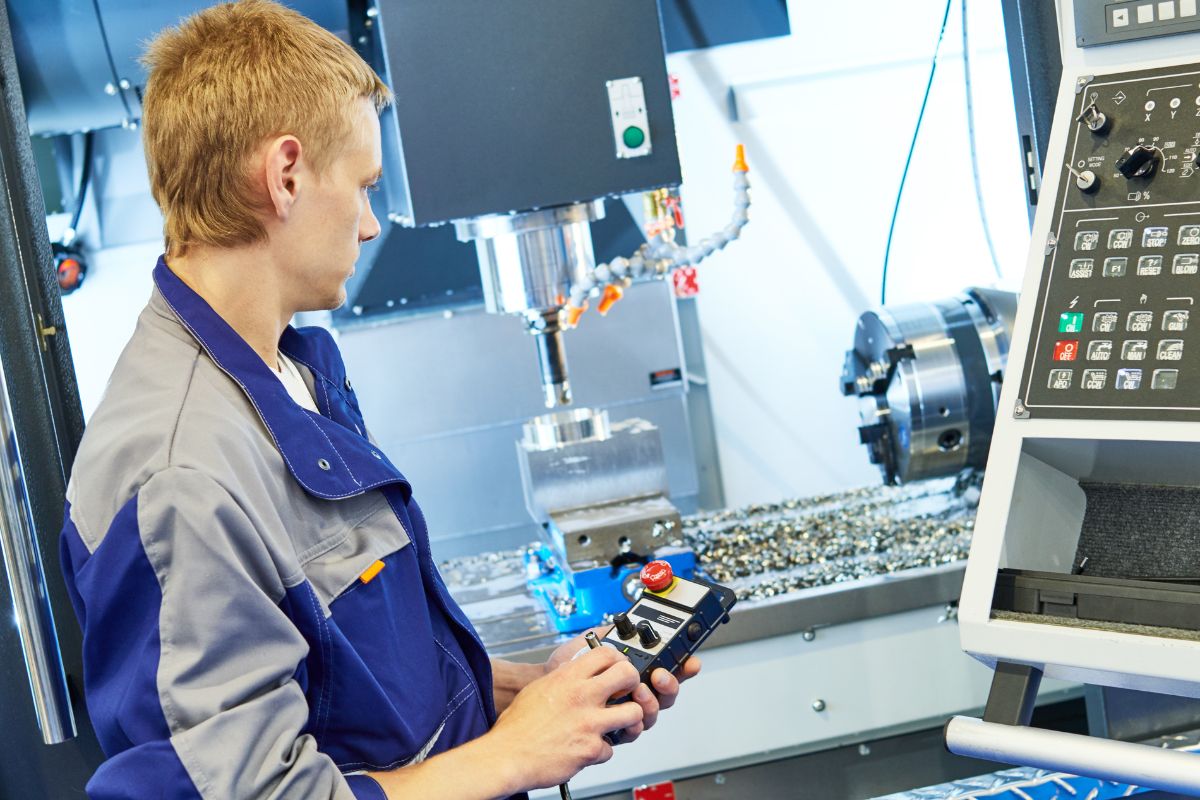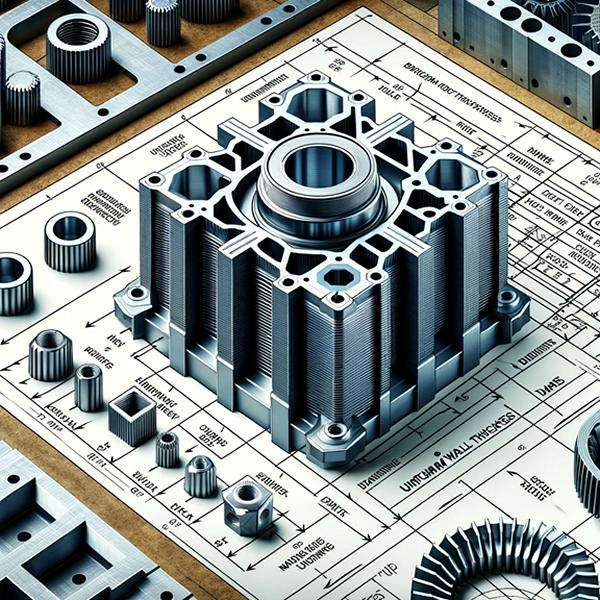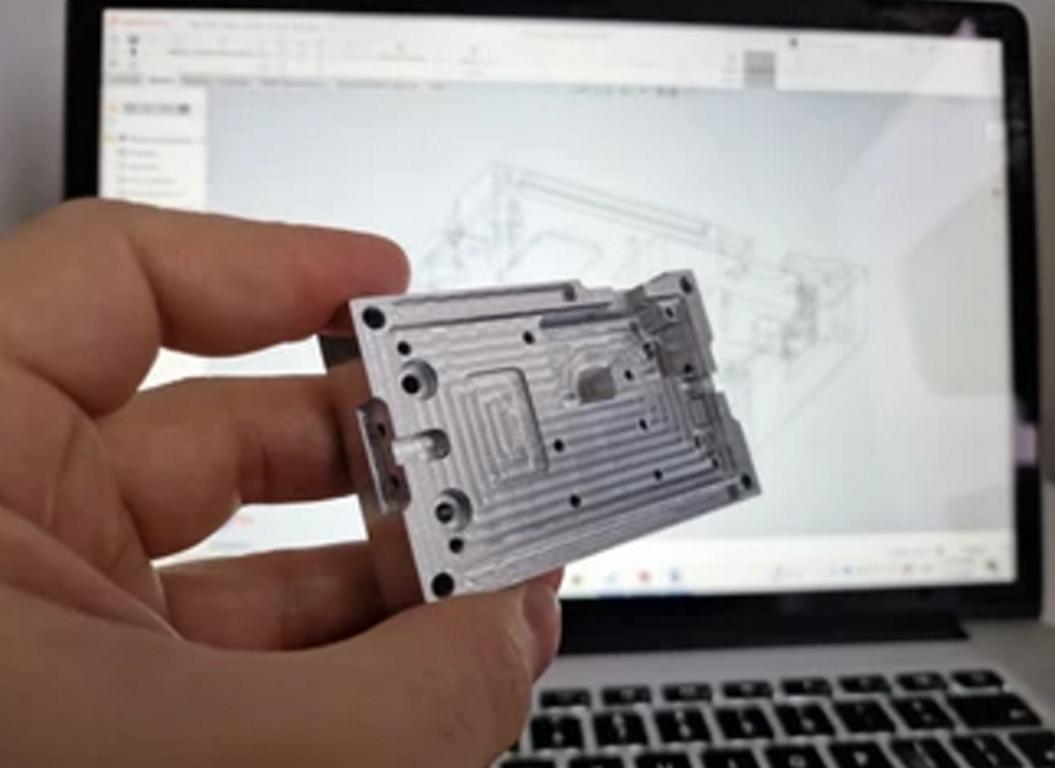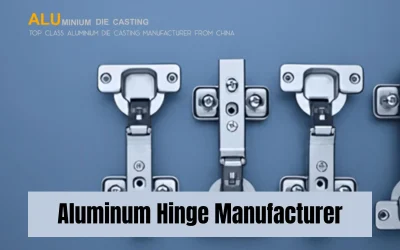Aluminum Prototype: A Quick Guide
Every great product starts with a prototype. In the case of metal parts, it is obvious. People always prefer making prototypes before production. All businesses widely prefer an aluminum prototype because aluminum is a soft metal and is widely available. Most importantly, it has a very strong strength-to-weight ratio.
This article mainly focuses on aluminum prototyping. You will learn what it is and why it is so important. You will also be familiar with several methods of making aluminum prototypes. Ultimately, you will know how to choose the proper method for your project. This article can be your best guide for making aluminum prototypes.
What is an Aluminum Prototype?
The aluminum prototype is typically the first model of a product. In the case of metallic products, aluminum is used to make this model. People also call aluminum prototypes an “aluminum mock-up” or “aluminum model.” It is usually used to test and refine your designs before full production.
Aluminum 6061 is widely used as the primary alloy for aluminum prototypes. It is popular because of its several benefits. First, it has a perfect strength-to-weight ratio. Second, it is lightweight and, of course, corrosion-resistant. Third, it is highly versatile, meaning you can use it to make any models. Overall, this alloy creates high-quality aluminum prototypes.
Aluminum prototypes are widely used in many applications. In automotive, they are crucial for making chassis parts and engine components.
In the aerospace industry, aluminum prototypes are also crucial. As you know, aircraft need high accuracy. Aluminum prototypes undergo rapid prototyping for the best results. These models are used before making various aircraft body components and fittings.
In electronics, aluminum prototypes are famous for manufacturing heat sinks or device casings. In medical, surgical instruments and equipment are noteworthy. Similar applications can be observed in consumer goods as well.
Understanding Aluminum Rapid Prototyping
Rapid prototyping is usually an iterative process. It has four main stages and one repetitive stage.
Design à Evaluation à Development à Evaluation à Implementation à Analysis
In the design phase, you can create a conceptual model of your product. In this case, you can use various model-making software. Most of the time, people use CAD software like AutoCAD or SolidWorks. Once your design is done, you can move your design to the evaluation stage. In this stage, you can ask for professional help.
Next, you can develop your design again based on the previous evaluation. Once your design is ready, it’s time to create the model. In this case, you can use several methods. We will discuss all these methods in later sections. However, in this stage, the main goal is to produce a tangible model that resembles the final metal part. Once your model is ready, give it for evaluation.
The next stage is Implementation. In the previous evaluation stage, you tested your aluminum prototype. The test result may require some changes in the size or tolerances. Based on this information, you can refine your design again.
This iterative process is usually called rapid prototyping. This is extremely popular in manufacturing.
The Purpose of Aluminum Prototyping
Why is aluminum prototyping so important? Why is creating a prototype very important before making the final product? Aluminum prototyping is important in several ways. Let’s check them out.
#1 Better Understanding of the Design Goals
Prototype aluminum helps you understand the design goals clearly. Sometimes, a physical model offers insights that may not be present in digital design. As you know, prototype aluminum is the tangible representation of the final product. Therefore, it is easy to visualize and refine your product in this way.
#2 Fit and Assembly
An aluminum prototype ensures that all parts fit together correctly. It mainly helps you identify issues with the assembly process. You can evaluate how each component interacts with each other. You can easily spot misalignment or gaps in this way. Overall, prototypes make it easier to make adjustments before moving into total production.
#3 Testing & Observation
Prototype aluminum allows you for real-world testing. You can observe how the product performs typically under various conditions. You can detect any defects or errors during this stage. In addition, you can find out the weaknesses of the design.
#4 Early Validation
Aluminum prototypes allow you to get early validation. You can carry your prototypes to the stakeholders to see. The high-quality aluminum prototypes will indeed bring you support and approval.
#5 High Accuracy
Aluminum prototypes offer high accuracy and precision, which is especially important for delicate components. By continuously rapid prototyping, you can achieve the highest accuracy of your final metal part.
#6 Minimizing Risk
When you identify the issues before, you minimize the risk in the final product. This risk can be a device performance risk or an investment risk. Either way, a prototype aluminum reduces the risk.
#7 Saves Time & Resources
Although creating an aluminum prototype may be expensive, it saves time and resources in the long run. From the previous six points, you know that prototypes help you detect the issues. It also offers high accuracy and risk minimization benefits. So, eventually, it saves a significant amount of capital.
5 Methods of Aluminum Prototype Manufacturing
You can typically create aluminum prototypes in various ways. Each method generally gives you a unique way to make the aluminum prototype. Tolerance also matters here.
As you know, an aluminum prototype is crucial to product development. It lets you test and improve the prototype before making many of it.
It is also essential to choose the correct method. As you know, each method has its own perks. So, based on your aluminum prototype design, select the proper technique. Three factors should be considered here. First, determine the level of the complexity. Second, what’s your desired accuracy? Will this part be used in delicate components? Third, what’s your production volume?
#1 CNC Aluminum Prototype
The fastest and easiest way to make an aluminum prototype is CNC machining. You can create various shapes using different types of CNC machines.
CNC machines have many types, based on cutting direction and number of axles. CNC milling, turning, drilling, and boring are the most common in this case. Concerning the number of axles, 3, 4, and 5 axes CNC machines are widely used for making aluminum prototypes.
CNC stands for Computer Numerical Control. It is a fully automated process for making various aluminum prototypes. You insert the necessary codes inside the device, and it gradually finishes your task. This method is used for multiple engine components or aircraft fittings.
Benefits
- CNC machining produces parts with high tolerances. You can achieve up to 0.01mm.
- You can create almost all types of complex geometries. Although, you may need multiple CNC machining methods.
- CNC machining is high-speed and accurate.
- It doesn’t need manual labor. Fully Automated. Operated by CNC Codes.
Limitations
- Although CNC machines can produce complex parts, they are limited to more complicated designs. In such cases, cast aluminum prototypes are better.
- The size of the aluminum prototype mainly depends on the working area of the CNC machine.
- This method needs skilled programmers to create CNC codes for various designs. However, modern software can convert 3D drawings to CNC codes.
- It produces more material waste.
#2 Prototype Aluminum Casting Processes
Right after CNC machining, metal casting is famous for making prototype aluminum. This method involves pouring molten metal into a mold to create a desired shape. It is one of the critical methods of modern manufacturing. Three famous methods of prototype aluminum casting are sand, investment, and die casting.
Aluminum Die-Cast Prototypes
Die casting is one of the most widely used methods for aluminum prototype manufacturing. This method usually has three main parts: injection, dies, and ejection. First, you will have to make the dies for the aluminum prototypes. Then, you can inject the molten metal into these dies. Later, after solidification, you can eject them out. This process may have different types: HPDC, LPDC, gravity, or vacuum.
Die Casting is ideal for aluminum prototyping and high-volume production. Most importantly, it offers an excellent surface finish and good accuracy.
Aluminum Sand Casting Prototypes
This method is the most traditional one. As the name implies, sand creates the mold in this method. Once you have made the mold, you can pour molten metal into it. In this way, you can create sand-cast aluminum prototypes.
For simpler designs, you can create aluminum prototypes using sand casting. However, for a better surface finish, you might need additional machining.
Aluminum Investment Casting Prototypes
Aluminum investment casting is another popular method. People also call this method the lost-wax method. This method of creating the mold uses a wax pattern covered in ceramic. Once the ceramic hardens, you can melt the wax and leave the mold. So, wax, in this case, acts as a medium for casting tooling.
Investment casting is very much suitable for aluminum prototyping. It provides high accuracy and a smooth surface finish.
Benefits
- CNC machining can make precise shapes, while metal casting allows for more complicated designs
- It creates almost no material waste.
- Once the dies or molds are created, the process is cost-effective. The production cost becomes cheaper.
- You can work with all types of metals except for aluminum.
Limitations
- Making the dies is usually expensive. Therefore, die design is the most crucial part of this method.
- For sand casting, you may often find surface defects.
- Sand casting or investment casting may not offer you the surface finish as CNC machining does
- Investment casting is a time-consuming process.
#3 Aluminum Extrusion Prototyping
As you know, aluminum is a soft metal. Thus, the extrusion process can easily make various shapes of aluminum parts.
The process is simple, just like the rubber or plastic extrusion process. In this method, you don’t need to melt the aluminum but heat it to get even softer. All you will need is a pre-shaped die through which you will push the aluminum metal to create various shapes. The result is different cross-sectional aluminum metal parts.
This method is ideal for making cross-sectional profiles, frames, rails, or structural parts.
Benefit
- It is a cost-effective solution.
- Almost no material waste.
- Since melting is not involved, this method offers strong and durable parts.
- You can create a wide range of cross-sectional designs.
- It is a fast and accurate method.
Limitations
- It is unsuitable for creating complex aluminum prototypes, except for cross-sectional design.
- Making the dies can be relatively expensive.
#4 Aluminum Forging Prototypes
Aluminum forging is generally a shaping method. It heats the aluminum rather than melting it and then applies a compressive force through the dies. You may wonder about the differences between aluminum forging and aluminum extrusion. Well, forging typically uses 3-dimensional geometry. On the other hand, the extrusion process is limited to 2-dimensional geometry.
If your aluminum prototype needs high strength, aluminum forging is suitable.
Benefits
- Aluminum forging improves the mechanical strength of the aluminum prototype.
- It also gives metal parts durability.
- You can achieve higher tolerances than sand casting or investment casting.
- It also minimizes material waste.
Limitations
- The following cost may be higher.
- You can only work with simple designs compared to casting or CNC machining.
- You may need longer production cycles.
#5 Aluminum Laser Cutting and Engraving
As the name suggests, this method uses a laser beam to cut and engrave aluminum. You can design your prototype on a computer, adjust the laser settings on the software, and start the process. The machine will create high-precision aluminum prototypes based on your design and settings.
This method is highly suitable for aluminum prototyping. You can create any design on flat metal sheets. For thin and medium-thickness sheets, this method performs nicely. However, you may need higher power for thicker sheets, which can be costly.
If you need 3D shapes with intricate designs, you should use CNC machining or metal casting methods. For flat surface designs, laser engraving can be the best option.
Benefits
- You can achieve the highest precision and accuracy.
- This method is much faster than all the others here.
- Laser cutting and engraving also create highly complex geometries.
- It is not makeable with laser tech for more complex designs like inner core or inside structure.
Limitations
- Laser machines are expensive, thus increasing the overall production cost.
- This method needs a professional hand, especially for making aluminum prototypes.
- A lower-power laser device is okay for aluminum. However, up to 10KW of power may be needed for other metals.
How to Choose the Right Aluminum Prototype Manufacturing Method for Your Job
The correct method matters a lot for an aluminum prototype. It affects the quality, finishing, and cost. Therefore, you must carefully select the aluminum prototype manufacturing method. To do this, you can consider the following six factors.
Factor #1 Size and Weight of the Aluminum Prototype
The first thing you should consider is the size and weight. For example, sand casting can usually accommodate large and heavy aluminum parts. Conversely, die-casting or investment casting is suitable for small or medium-sized parts.
Moreover, laser cutting is suitable for flat-surface aluminum parts. The size of the aluminum prototype mainly depends on the device’s working area. The same can be observed for CNC machines. However, CNC machines can create complex 3D aluminum prototypes.
Factor #2 Design Complexity
Design difficulties also play a crucial role. Some prototypes come with simple designs, while some are detailed. So, you must choose a method that can accommodate these designs.
In the die-casting method, you can create dies of any design. It typically allows you to work with complicated shapes. You can also do the same thing with the investment casting method. However, sand casting is only suitable for simpler designs.
You can think about laser engraving. But it is only limited to metal sheets. Overall, you must know what type of aluminum prototypes you are working with. Specifically, check your design and try to find its difficulty level.
Factor #3 Accuracy Needs
Accuracy is also paramount in aluminum prototyping. Delicate components need extremely high accuracy. CNC machining, in this case, gives you more accuracy. You can technically achieve tolerances up to 0.01mm.
If your application doesn’t need that much tolerance, you can go for sand casting. However, die casting gives you high tolerance as well. It is also ideal for high-volume orders.
Factor #4 Surface Finish
Surface finish is one of the most crucial factors here. Most aluminum products require an excellent surface finish. Kitchen appliances, consumer goods, and electronics casings are noteworthy examples. In this case, you must choose a method that gives you a shiny surface finish.
Die casting, especially HPDC aluminum casting, produces excellent results. However, CNC machining can also produce better results.
Factor #5 Production Volume
The correct method also depends on the volume of your order. You can choose methods like CNC machining or investment casting for low-volume orders. On the other hand, for higher volume orders, you can choose die-casting and extrusion methods.
Specify your production volume needs. This will help you choose the best way and cost the least.
Factor #6 Budget
Budget is always a critical factor. Some methods are expensive, while some are cheap. CNC machining and investment casting can be costly. As you know, these methods are accurate and can work with complicated designs.
Making the dies may be costly in die casting, but you can make hundreds of thousands of productions in the long run. As a result, die-casting parts are cheap.
Sand casting and extrusion are typically budget-friendly methods. However, their initial setup may be relatively expensive.
Frequently Asked Questions
What alloy is best used for a prototype?
For Aluminum prototypes, 6061 is the most often used alloy. It is widely popular due to its few benefits. First, this alloy is widely available worldwide. You can easily get it anywhere in your area. Second, it offers good machineability and weldability. In addition, this alloy is strong and durable. You can use it in many applications.
Why is it important to develop a prototype as the first stage of product development?
An aluminum prototype can help you in many ways. It is crucial to make one before mass production. First, it allows you to test the product and, if necessary, make necessary adjustments. Second, prototypes help you develop your product. This means you can make progress toward the most efficient design. Overall, an aluminum prototype saves your investment.
What is rapid prototyping Aluminum?
Rapid prototyping is a continuous process. In real-world manufacturing, engineers first make one prototype and then send it for review. After refining it, they will make another prototype. They continue to make prototypes until they get the best result. This consecutive process is called rapid prototyping. When you are dealing with aluminum, it is called rapid prototyping aluminum.
How long should a prototype take to make?
The time it takes to make an aluminum prototype usually depends on the type of prototype manufacturing method. A CNC machining method takes only a few hours from the design stage to the final stage. Metal casting or investment casting may take up to 15 days to 1 month. Rapid prototyping may extend up to 2 months. So, the exact time mainly depends on the prototype and manufacturing type.
Summary
Let’s wrap everything up! An aluminum prototype is generally a sample made before the final production. It is actually a part of your whole production.
For every batch, creating a prototype is extremely important. It typically allows you to test and refine your ideas. You can refine your prototype consecutively. In business, people usually call it rapid prototyping.
You can typically create aluminum prototypes in several ways. In this article, we briefly mention the five most popular ones. Practically, Aluminum CNC machining is the easiest way to make a prototype. However, it may be costly and not suitable for high quantities.
Next, metal casting allows you to create a wide range of complex aluminum parts. Die casting is typically the ideal method for aluminum. Laser cutting, extrusion, and forging are also quite popular in aluminum prototyping.
Choosing the correct prototyping method is also crucial. In this case, you can consider six primary aspects. Start by considering the size and weight. Next, evaluate the design difficulty. Then, determine how much accuracy you need and what type of surface finish should be used. Finally, check the quantity you require and your project’s overall budget.
If you have any questions about aluminum prototyping, feel free to contact us. Our professional team of experts is always happy to assist.








0 Comments